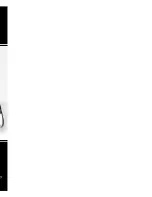
© 2003 TDM Audio, Inc.
Electronic Crossover Owner’s Manual
Page 7
result in a greater overall efficiency of the system by making sure a band of frequencies
is always reproduced by the speaker components that are most efficient at reproducing it.
How Crossovers Work
To divide a range of frequencies into two or more smaller ranges, a crossover uses filter circuits.
A filter is simply a circuit that lowers the levels of unwanted frequencies in a signal. There are
two different kinds of filters used in crossovers:
•
High Pass Filters:
These reduce the levels of low frequencies in the signal.
•
Low Pass Filters:
These reduce the levels of high frequencies in the signal.
Filters
roll off
unwanted frequencies. Imagine that you have a high pass filter with a cutoff
frequency of 1000 Hz. That means the filter is supposed to keep frequencies above 1000 Hz
while discarding frequencies below 1000 Hz. Do you suppose, then, that a signal fed into this
filter at 999 Hz would simply not show up at the output? If you answered “No” you were
correct! In fact, a signal at 999 Hz would be virtually as loud at the output of this filter as a
signal at 1000 Hz. Signals that are above or near the cutoff frequency of a high-pass filter are
reproduced at normal levels. As the frequency gets lower, the level gradually decreases. The rate
of decrease is called the filter’s
rolloff rate.
This term comes from the fact that on a graph of a
high-pass filter’s frequency vs. its gain, there is a smooth curve below the cutoff frequency. Here
is an example of such a graph:
-40
-35
-30
-25
-20
-15
-10
-5
0
5
20
140
260
380
500
620
740
860
980
1100
1220
1340
1460
1580
1700
1820
1940
2060
2180
2300
Frequency (Hz)
G
ain (dB)
Figure 3 - Filter Frequency Response Curve
Figure 3 shows the curve of a 1000 Hz high-pass filter with a rolloff rate of 6 dB per octave. For
every for every octave below the cutoff frequency, we subtract 6 dB from the gain of the filter.
The cutoff frequency itself is actually at -6 dB. Filters with higher rolloff rates have steeper
looking curves. The TDM 24CX series crossovers have a 24 dB per octave rolloff rate. Figure 4
is what the above filter would look like with this higher rate.


























